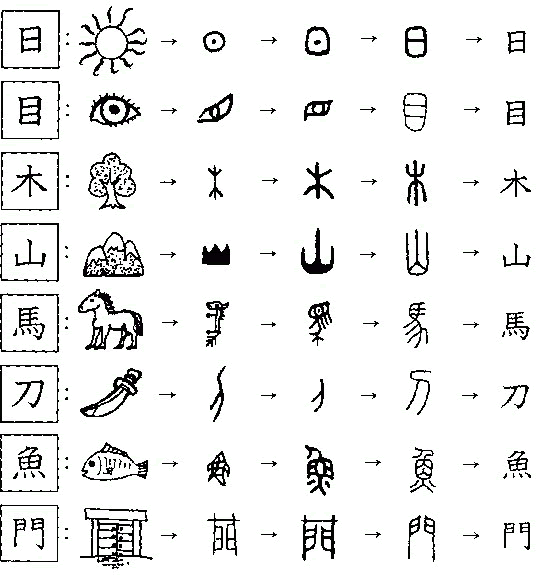by Tom Thompson
Probably no nation in the world, along with its national language, has been the subject of more myth making than China.
Without a deeper appreciation of the reality and consequences of China’s low-quality economic growth, gullible observers, the people I like to call uncritical lovers, are overly impressed with China’s rise as Empress Catherine the Great was with the Potemkin Village. There are lots of unloving critics, too; they often ignore genuine achievements.
And so it is with the Chinese language. Even now language enthusiasts proclaim the transcendental status of Chinese characters, mainly that they are pictographs capable of capturing a special Asian range of human cognition and emotion, all visually.
Even an avalanche in recent years of study guides, flashcards, workbooks, and now computer programs hasn’t done much to tackle the nonsense that Dominican friar Gaspar da Cruz started in 1569 that Chinese characters are pictographic symbols, not unlike Egyptian hieroglyphs. Many other more famous scholars, like Matteo Ricci, abetted him.
As with everybody who studies Chinese, I remember the early fascination with certain characters, which are indeed pictographic. Favorite examples are easy to illustrate here with the accompanying chart (see below). And we have plenty of evidence of this phenomenon from ancient turtle bones, oxen shoulder blades, and bronze inscriptions. But it needs to be said that while early writings may have pictographic graphemes, they only make up at most 4% of the Chinese lexicon!

The characters shown above mean sun, eye, wood (tree), mountain, horse, knife, fish and door/gate.
Despite this the majority of Chinese characters, about 80%, are formed through the method of semantic-phonetic compounding. Some illustrations. Take the Chinese character 马mǎ , which is a morpheme meaning “horse. It can at the same time be used as a phonetic graph representing the syllable “ma” in forming characters with composite graphs denoting various meanings. For example, when combined with a graph signifying a woman 女, the character 妈 ma “mother” is said to have a composite structure as it is composed of two graphs, and . similarly, when the phonetic graph is combined with signific graph of stone 石 , the character码 indicates a unit of length, “yard.” Another combination is the graph in combination with the graph of two mouths (口口) The result is 骂 mà , meaning to curse.” The character 马 for horse is clearly used as a phonetic graph relating to the sounds of the syllable ma without any implication of its original meaning. It’s worth noting that semantic and phonetic components of Chinese characters can be on the left side, right side, top, or any part of a character.
Even a contemporary better understanding of Chinese writing has not stopped some Western experts from making even more grand claims about the virtues and limitations of Chinese. An example is the argument that Chinese writing lacks the abstract features of an alphabet, which is said to hamper the kind of analytical, and abstract thought necessary for scientific creativity. The crazy extension of this kind of thinking is in the ‘pop-psych’ of “left brain/right brain” theories. The basic idea behind these theories is that the left side of the brain is analytical, verbal, and coldly rational whereas the right side of the brain is devoted to the visual, tactile, and imaginative aspects of human cognition. The message is that Chinese is not sufficiently analytical. Not surprisingly, a lot of experiments designed to demonstrate “hemispheric laterality” in users of Chinese characters are poorly structured, improperly carried out, or interpreted with twisted logic. The writings that argue Chinese speakers have more trouble with abstract thinking than Americans is pure academic hucksterism.
Information about Mandarin | Phrases | Numbers | Colours | Family words | Terms of endearment | Time | Weather | Tongue twisters | Tower of Babel | Articles | Links | Learning materials
Tom Thompson writes often on foreign language topics. He lives in Washington, D.C.
Writing systems | Language and languages | Language learning | Pronunciation | Learning vocabulary | Language acquisition | Motivation and reasons to learn languages | Arabic | Basque | Celtic languages | Chinese | English | Esperanto | French | German | Greek | Hebrew | Indonesian | Italian | Japanese | Korean | Latin | Portuguese | Russian | Sign Languages | Spanish | Swedish | Other languages | Minority and endangered languages | Constructed languages (conlangs) | Reviews of language courses and books | Language learning apps | Teaching languages | Languages and careers | Being and becoming bilingual | Language and culture | Language development and disorders | Translation and interpreting | Multilingual websites, databases and coding | History | Travel | Food | Other topics | Spoof articles | How to submit an article
[top]
You can support this site by Buying Me A Coffee, and if you like what you see on this page, you can use the buttons below to share it with people you know.

If you like this site and find it useful, you can support it by making a donation via PayPal or Patreon, or by contributing in other ways. Omniglot is how I make my living.
Note: all links on this site to Amazon.com, Amazon.co.uk
and Amazon.fr
are affiliate links. This means I earn a commission if you click on any of them and buy something. So by clicking on these links you can help to support this site.
[top]